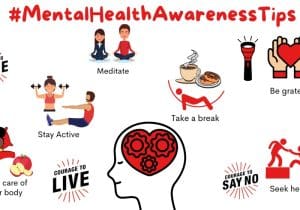Nicole M. Young, MSW
For some kids, the new school year is an exciting time — seeing old friends, making new ones, showing off cool clothes, joining sports or clubs, or enjoying new classes and teachers. For other kids, the transition between summer and school sparks difficult feelings, like fear, anxiety, or depression. And for many, it’s all of that and everything in between.
Dear Nicole,
Our family had a great summer – lots of fun together and less stress and pressure. When school started, I expected grumpiness about getting up early and homework, but my 14-year-old seems much more distressed than usual. They don’t want to talk about it and get mad when I ask if they’re upset. Should we give them space to figure things out, or should we be worried? Sam
Dear Sam,
Any time there’s a noticeable change in your child’s (or anyone’s) mood and behavior, it makes sense to be concerned and want to understand what’s going on. The Centers for Disease Control and Prevention (CDC), American Academy of Pediatrics (AAP), and the Surgeon General have been warning of increases in mental health issues among teens and tweens (and some younger children), such as anxiety, sadness, and feelings of hopelessness that can lead to issues like drug and alcohol use, eating disorders, or thoughts of suicide.
As parents and caring adults, we can do our best to provide a safe and supportive environment, model good self-care, and seek help. Here are some tips to try:
Keep the lines of communication open. Sometimes, kids just need parents and other adults to listen without judging or trying to solve their problems. If your child doesn’t want to talk, remind them you’re always there if they want to share what’s on their mind in a face-to-face conversation, text, letter, or other method. If they’d be more comfortable talking to someone else—a teacher, counselor, or relative—help them take that step (and don’t take it personally!).
Discuss screen time. Many kids (and adults) are spending more time on phones and other screens than ever before. Technology and social media can be a source of connection and learning. They can also cause social pressure, leading to self-criticism and negativity when a young person believes their life and appearance don’t measure up to the unattainable perfection they see online. More screen time also means less time for health-boosting activities, like being outdoors, being with friends, or sleeping.
Have a family conversation about screen time and social media use. Create or renew agreements that everyone (kids and adults) will follow, like putting devices away during meals and at bedtime (instead of sleeping with phones under the pillow). Talk with your child about how they feel after spending time online. Are there particular activities, sites, or times of day that affect their mood for better or worse?
 Encourage healthy habits and realistic expectations. Quality sleep, balanced nutrition, physical activity, mindfulness practices, experiencing nature, mental healthcare, and supportive relationships are scientifically proven “stress busters” that improve physical and mental wellness. If there’s a particular source of anxiety or stress, such as competitive sports or advanced classes, talk about options for dialing back the pressure. Reassure your child it’s not a failure if they take a break or lighten their workload. Remember these tips apply to parents and caregivers, too!
Encourage healthy habits and realistic expectations. Quality sleep, balanced nutrition, physical activity, mindfulness practices, experiencing nature, mental healthcare, and supportive relationships are scientifically proven “stress busters” that improve physical and mental wellness. If there’s a particular source of anxiety or stress, such as competitive sports or advanced classes, talk about options for dialing back the pressure. Reassure your child it’s not a failure if they take a break or lighten their workload. Remember these tips apply to parents and caregivers, too!
Seek support. Seeking help for mental health concerns is a sign of strength, not weakness, just like seeking medical help for an injury or physical illness. Call 2-1-1 to find local resources or ask your health care provider to help connect you to someone experienced in child and youth behavioral health issues. Many health clinics, schools, and community-based agencies offer counseling for children and youth, in addition to private therapists.
Seek help immediately if your child talks about or attempts self-harm or suicide, has lost interest in activities, or expresses extreme anger and violence. Call 9-8-8, the new national emergency number, for suicide prevention or a crisis response.
 FINAL THOUGHTS: It can feel so helpless to watch a child suffer, whether it’s from temporary anxiety and sadness or more profound despair and hopelessness. Seeking help is always a good idea if you’re worried, and modeling help-seeking, self-care, and other healthy behaviors is one of the best things you can do.
FINAL THOUGHTS: It can feel so helpless to watch a child suffer, whether it’s from temporary anxiety and sadness or more profound despair and hopelessness. Seeking help is always a good idea if you’re worried, and modeling help-seeking, self-care, and other healthy behaviors is one of the best things you can do.
This monthly column provides tips for anyone who’s raising children, based on the world-renowned Triple P – Positive Parenting Program, available to families in Santa Cruz County. If you have a question or idea for a future column, email me at triplep@first5scc.org.
Nicole Young is the mother of two children, ages 18 and 22, who also manages Santa Cruz County’s Triple P – Positive Parenting Program, the world’s leading positive parenting program. Scientifically proven, Triple P is made available locally by First 5 Santa Cruz County, the Santa Cruz County Health Services Agency (Mental Health Services Act) and the Santa Cruz County Human Services Department. To find a Triple P parenting class or practitioner, visit http://triplep.first5scc.org, http://www.facebook.com/triplepscc or contact First 5 Santa Cruz County at 465-2217 or triplep@first5scc.org.





